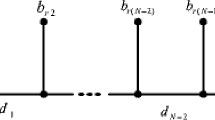Abstract
The reception quality of an interference limited indoor wireless communication system employing vertical frequency reuse is analysed. Outage probability expressions are used to measure the level of cochannel interference. The received signals are assumed to suffer the effects of Rayleigh fading and log-normal shadowing and multiple cochannel interferers are included in the analysis. The expected reception qualities are studied in a range of buildings and the results show that typically a vertical reuse distance of 3 floors will not isolate cochannel floors sufficiently to allow reliable reception. For one building analysed, even a vertical reuse distance of five floors is not likely to result in sufficiently low levels of cochannel interference. When multiple interferers are considered, it is not a straight forward task to determine the number of cochannel interferers that contribute significant interference since this may depend on the propagation conditions in a particular building.
Similar content being viewed by others
References
R. Steele, “Towards a High-Capacity Digital Cellular Mobile Radio System”, IEE Proc., Pt F, Vol. 132, No. 5, Aug. 1985, pp. 405–415.
T.S. Rappaport and S. Sandhu, “Radio-Wave Propagation for Emerging Wireless Personal-Communication Systems”, IEEE Antennas and Propagation Magazine, Vol. 36, No. 5, Oct. 1994, pp. 14–23.
J-P. Linnartz, “Narrowband Land-Mobile Radio Networks”, Artech House, 1993, Chapter 3.
V.H. Macdonald, “The Cellular Concept”, Bell System Technical Journal, Vol. 58, No. 1, Jan. 1979, pp. 15–41.
S.E. Alexander, “Characterising Buildings for Propagation at 900 MHz”, Electron. Lett., Vol. 19, No. 20, Sep. 1983, pp. 860.
A.J. Motley, and J.M.P. Keenan, “Personal Communication Radio Coverage in Buildings at 900 MHz and 1700 Mhz”, Electron. Lett., Vol. 24, No. 12, Jun. 1988, pp. 763–764.
D. Molkdar, “Review on Radio Propagation into and Within Buildings”, IEE Proc. Pt H, Vol. 138, No. 1, Feb. 1991, pp. 61–73.
S.Y. Seidel and T.S. Rappaport, “914 MHz Path Loss Prediction Models for Indoor Wireless Communications in Multifloored Buildings”, IEEE Trans on Antennas and Propagation, Vol. 40, No. 2, Feb. 1992, pp. 207–217.
S.Y. Seidel and Rappaport, T.S., “Path Loss Prediction in Multifloored Buildings at 914MHz”, Electron. Lett., Vol. 27, No. 15, Jul. 1991, pp. 1384–1387.
S.Y. Seidel, T.S. Rappaport, M.J. Feuerstein, and K.L. Blackard, “The Impact of Surrounding Buildings on Propagation for Wireless In-Building Personal Communications System Design”, in Proc. 42nd IEEE Veh. Tech. Conf., Denver, CO., 1992, pp. 814–818.
S.E. Alexander, “Radio Propagation within Buildings at 900 MHz”, Electron. Lett., Vol. 18, No. 21, Oct. 1982, pp. 913–914.
S.T.S. Chia and A. Baran, “900 MHz Attenuation and Bit Error Ratio Measurements Inside a Modern Office Building”, IEE Conf. Publ., No. 315, 1989, pp. 33–37.
B. Benzair, I.A. Glover and J.G. Gardiner, “Vertical Propagation of Radio Signals in an Eleven Storey Building at 144 MHz”, IEE Conf. Publ., No. 351, 1991, pp. 83–86.
T.S. Rappaport, “The Wireless Revolution”, IEEE Communications Magazine, Nov. 1991, pp. 52–71.
F. Van Der Wijk, A. Kegel, and R. Prasad, “Assessment of a Pico-Cellular System Using Propagtion Measurements at 1.9 Ghz for Indoor Wireless Communications”, IEEE Trans. Veh. Technol., Vol. 44, No. 1, Feb. 1995, pp. 155–162.
P.J. Barry and A.G. Williamson, “Radiowave Propagation Into and Within a Building at 927MHz”, Electron. Lett., Vol. 23, No. 5, Feb. 1987, pp. 248–249.
A.M.D. Turkmani, “Radio Transmission at 1800MHz into, and within, Multistory Buildings”, IEE Proc., Pt I, Vol. 138, No. 6, Dec. 1991, pp. 577–584.
K.W. Sowerby and A.G. Williamson, “Estimating Reception Reliability in Cellular Mobile Radio Systems”, in Proc. 42nd IEEE Veh. Tech. Conf., Denver, CO., 1992, pp. 151–154.
K.W. Sowerby, “Outage Probability in Mobile Radio Systems”, PhD Thesis, Feb. 1989.
R. Prasad, A. Kegel and J. Olsthoorn, “Spectrum Efficiency Analysis for Microcellular Mobile Radio Systems”, Electron. Lett., Vol. 27, No. 5, Feb. 1991, pp. 423–425.
R. Prasad and A. Kegel, “Improved Assessment of Interference Limits in Cellular Radio Performance”, IEEE Trans. Veh. Technol., Vol. 40, No. 2, May, 1991, pp. 412–419.
R.G. Vaughan, “Private Communication”, 1995.
A. Kegel, F. Van der Wijk, and R. Prasad, “Evaluation of a Cellular Structure in Indoor Systems”, in Proc. 42nd IEEE Veh. Tech. Conf., Denver, CO., 1992, pp. 835–838.
P.M. Cartwright and K.W. Sowerby, “Uplink and Downlink Analysis of a Three-Dimensional Wireless Indoor Communications System”, Electron. Lett., Vol. 23, No. 4, Mar. 1995, pp. 538–539.
J. Choong and D. Everitt, “Outage Analysis and Spectral Efficiency of Indoor Mobile Radio Systems”, in Proc. 45th IEEE Veh. Tech. Conf., Chicago, USA, 1995, pp. 434–438.
C. Tornevik, J-E. Berg, F. Lotse and M. Madfors, “Propagation Models, Cell Planning and Channel Allocation for Indoor Applictions of Cellular Systems”, in Proc. 43rd IEEE Veh. Tech. Conf., 1993, pp. 867–870.
W.C.Y. Lee, “Mobile Cellular Telecommunications Systems”, McGraw-Hill, Singapore, 1990.
W. Honcharenko, H.L. Bertoni and J. Dailing, “Mechanisms Governing Propagation Between Different Floors in Buildings”, IEEE Trans. on Antennas and Propagation, Vol. 41, No. 6, Jun. 1993, pp. 787–790.
K. Hamabe, T. Kanai and K. Yoshida, “Consideration on Indoor Path Loss Characteristics at 2.1 GHz for Cordless Telephone Systems”, in Proc. PIMRC Conference, 1993, pp. A1.1.1–A1.1.4.
A.A.M. Saleh, A.J. Rustako and R.S. Roman, “Distributed Antennas for Indoor Radio Communications”, IEEE Trans. Commun., Vol. 35, No. 12, Dec. 1987, pp. 1245–1251.
A.J. Motley and D.A. Palmer, “Reduced Long-Range Signal Reception with Leaky Feeders”, Electron. Lett., Vol. 19, No. 18, Sep. 1983, pp. 714–715.
D.C. Cox, “Wireless Network Access for Personal Communications”, IEEE Communications Magazine, Vol. 30, No. 12, Dec. 1992, pp. 96–115.
W. Honcharenko, H.H. Xia, S. Kim and H.L. Bertoni, “Measurements of Fundamental Propagation Characteristics Inside Buildings in the 900 and 1900 MHz Bands”, in Proc. 43rd IEEE Veh. Tech. Conf., 1993, pp. 879–882.
Author information
Authors and Affiliations
Rights and permissions
About this article
Cite this article
Cartwright, P., Sowerby, K. Interference Analysis of an in-Building Wireless Communication System Employing Vertical Frequency Reuse. Wireless Personal Communications 5, 199–221 (1997). https://doi.org/10.1023/A:1008824116193
Issue Date:
DOI: https://doi.org/10.1023/A:1008824116193




